There are nearly 10,000 different species of bird, but which are the largest? We’ve talked about the ambiguity of size before: do we go by length, weight, or how much bathwater they displace?
When dealing with flying animals, it seems appropriate to go more by how well they block out the sun as they descend rather than how many fractions of an African elephant they weigh.
This piece considers the largest flying birds by wingspan, but with a mention of some of the impressive heavyweights, too.
Some of these bird weights are estimated from a series of cited reports, others are set in stone, and we’ve purposefully left out very similar species that closely match, so as not to make it a repetitive list of almost-identical vultures, pelicans and albatrosses.
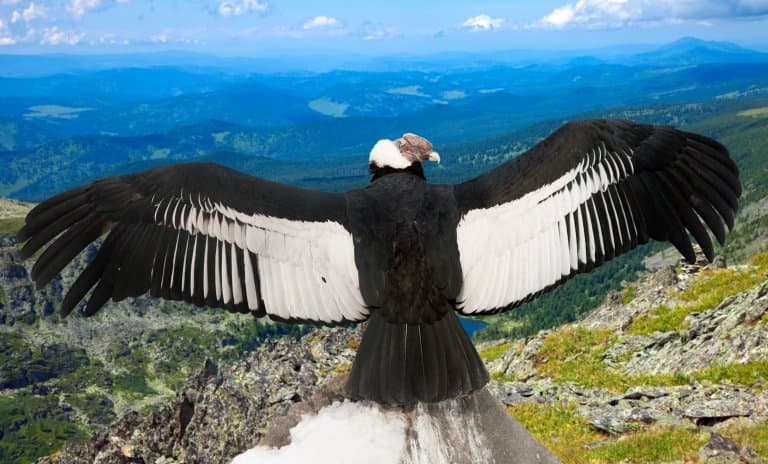
Here’s our top ten list of the biggest animals to fly through the air considering wingspan, weight and a little diveristy to keep it interesting.
10. Blakiston’s Fish Owl (Wingspan: 1.8 m / 6 ft)
Weight: 4.6 kg / 10 lb
This is a very rare type of eagle owl from East Asia and Russia. It’s going up against its cousin, the Eurasian eagle owl, for the longest wingspan of any owl, with both contenders hitting lengths of around 1.8 meters and slightly above.
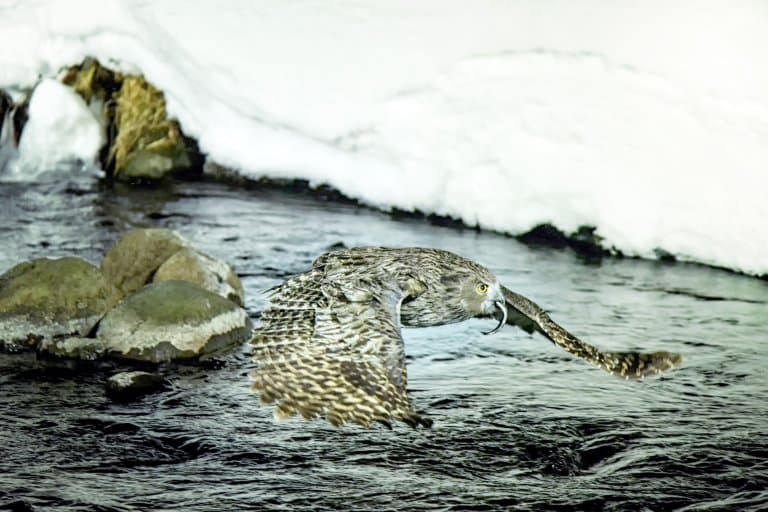
The Eurasian equivalent may hold the record wingspan of the two, but the Blackston’s beats it on average, and since they’re a much smaller population, they deserve the record. 1
9. Dalmatian Pelican (Wingspan: 1.9 m / 6.2 ft)
Weight: 15 kg / 33 lb
The biggest pelican is also one of the biggest birds. The Dalmatian pelican has a huge gulp and a huge wingspan of almost two meters, much greater than its canine namesake.
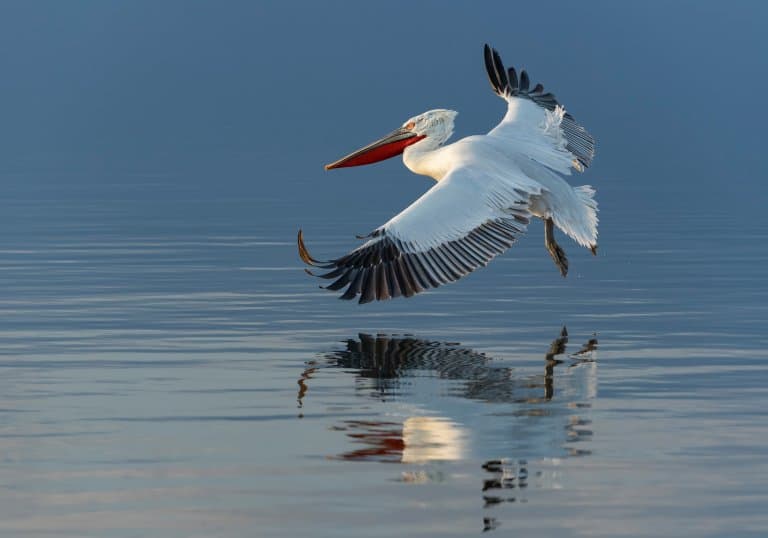
These are not elegant birds, either, and can hit 15 kg in weight, making them one of the heaviest flying birds.
There are a lot of lofty claims about the wingspan of this bird, with some suggesting it rivals the animal at the end of this list and many suggesting it beats it outright.
But these seem to have very no evidence behind them whatsoever, so until it’s confirmed, they’ll have to sit at the other end.
Still, average measurements of up to 1.9 m are recorded, and a commonly-cited measurement of up to 2.8 m (from a book) makes this undoubtedly one of the largest birds in the air. The Great White pelican rivaled this pelican for the largest, but on average the Dalmatian pelican is the bigger bird. 2
8. Secretarybird (Wingspan: 2.1 m / 6.9 ft)
Weight: 4.27 kg / 9.4 lb
This one looks like it should be in the extinct monsters category. It’s about as close to a prehistoric dinosaur as you can get!

Not only is it a heavy bird, but it’s also one of the tallest at up to 1.3 meters. This size and weight, combined with a morphology that doesn’t really lend itself to flying mean that it mostly uses the wind for lift.
Any flapping is short-lived, and this bird will spend most of its time running around hunting prey in the long grass. 3
7. Steller’s Sea Eagle (Wingspan: 2.3 m+ / 7.5 ft)
Weight: 10 kg / 22 lb
Now that we’ve reached the eagles, there are lots of conflicting reports. People love eagles, and many imperialist and self-aggrandising nations have historically used them as symbols of their ego.

On top of that, eagles are really cool, so people naturally want to find the biggest one.
As a result, everyone wants their eagle to be the biggest, and as such, there’s a bit of a competition going around.
Entries include: The Steller’s Sea Eagle, the Russian entry; The Harpy Eagle, Central and South America’s; the Philippine Eagle; and the US’s pride and joy, both the Bald and Golden eagles (Britain’s entry was the robin, which didn’t make the finals).
Each contender has claims of wingspans of above 2.4 m / 8 feet, and almost all of them are impossible to verify. We’ve given it to Stellar’s since it’s commonly measured as the heaviest eagle in the world and that earns it some points too. 4
6. Trumpeter Swan (Wingspan: 2.4 m / 7.9 ft)
Weight: 15 kg / 33 lb
Now we’re starting to get into the heavyweights. The biggest waterfowl is the Trumpeter swan, and this bird is heavier than most on this list.
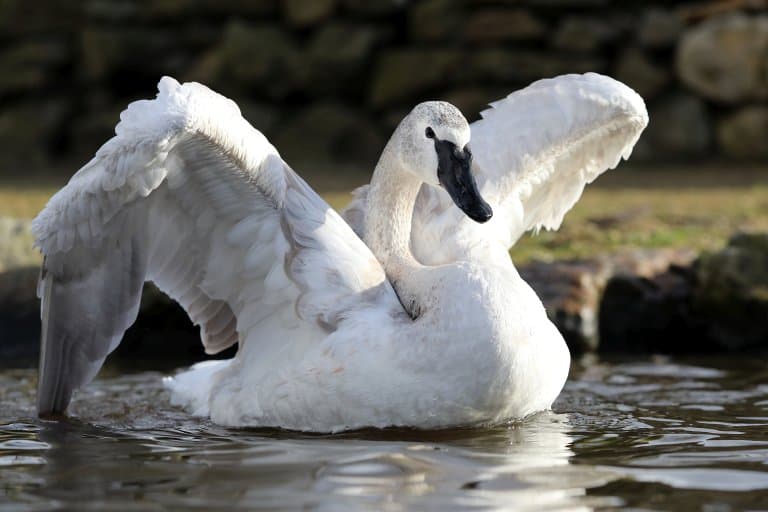
These are widespread in North America, so they’re larger and noisier than their European cousins, though some European populations survived being hunted for their meat and feathers.
The sheer size of these birds means that other than human hunters, not much will take them on, and they live in relative peace with few predators.
The young bulk up on protein-rich insects, and the adults lead a mostly vegetarian diet, keeping them alive for upwards of 30 years. 5
5. Kori Bustard (Wingspan: 2.47 m / 8.1 ft)
Weight: 18 kg / 39 lb
This is one fat bustard. Not only is it probably the heaviest flying animal, but it also makes the list for one of the largest wingspans, too.
Much like the secretary bird, it can fly but spends more time on the ground looking for food and getting into fights with the secretarybird.
There are claims of it reaching 20 kg, but 18 kg is reliably reported. It’s over a meter tall, and its weight helps it defend itself against its more agile competitor. 6
4. Marabou Stork (Wingspan: 2.9 m / 9.5 ft)
Weight: 9 kg / 20 lb
About as tall as the secretarybird but far more capable of flight, these enormous birds scavenge through trash piles in East Africa and will cast an ominous shadow as they approach.

There are claims of the Maribou stork reaching wingspans of over 3 meters, and suggestions that it ties with the American Condor for the largest wingspan of any flying animal, but so far, these don’t seem to be backed up reliably.
Still, it’s definitely one of the biggest, and while, with their bald heads and weird testicle-like appendages hanging beneath their necks, they don’t quite have the charm of the condor; they’ve got a sort of ugly cuteness going for them.
With a height of 1.2 m and a wingspan of 2.9 m, marabou storks (Leptoptilos crumeniferus) are one of the largest of any bird on earth. 7
3. Andean Condor (Wingspan: 3 m / 9.8 ft)
Weight: 16 kg / 13.2 lb
The average weight and wingspan of this condor beat pretty much every other flying animal, making it, generally, the largest flying creature in existence, on average.
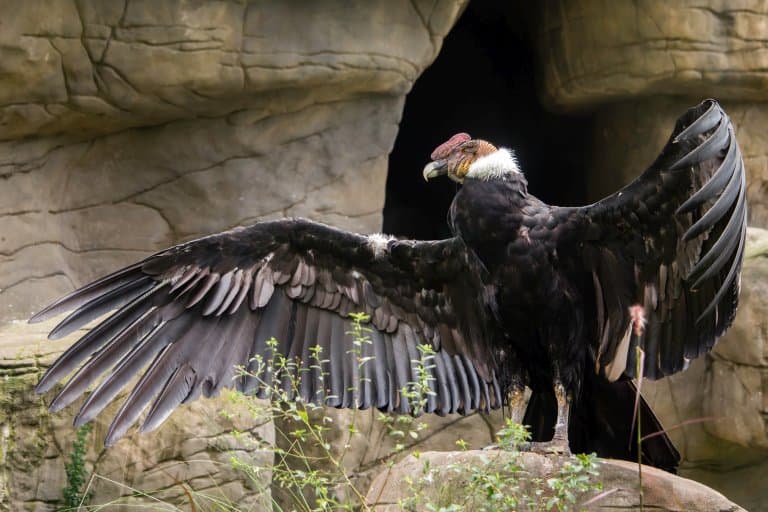
Male bustards do outclass them in weight fairly often, and the exceptionally long examples of the following birds can beat the condor in wingspan, too.
But on average, these are the largest flying birds and have an immense wing area that keeps them in the air for hours at a time without needing to flap their wings once. This saves a tremendous amount of energy for a bird this big!
The Andean condor is the largest flying bird in the Western hemisphere, and in the world when combining measurement of weight and wingspan together. 8
2. Cinereous Vulture (Wingspan: 3 m / 9.8 ft)
Weight: 13 kg / 28.6 lb
This is another raptor with a lot of competition. With the Himalayan vulture reporting a very similar wingspan, it’s hard to know who gets placed here, but the cinerous vulture certainly sounds cooler, and its heavier weight sets it apart.
The cinerous vulture is the largest Old World vulture and member of the bird of prey family.

This is a species that reaches all the way from Spain, across Europe, the Middle East and Asia. They can live a long time, too, with outstanding individuals reaching almost 40.
They’ve been poisoned and driven to extinction in much of Western Europe, but reintroduction programs have had some success in building them back up.
While they’re mostly scavengers, some farmers complain of these birds taking young pigs and cattle from domesticated stocks, and they’re certainly big enough to do so! 9
1. Wandering Albatross (Wingspan: 3.2 m / 10.5 ft)
Weight: 12 kg / 26.4 lb
Of all the animals on this list, this one is probably the one with the least competition. Although other albatross species come close, the Wandering Albatross wingspan is reliably measured at 3.2m and has persuasive reports of it reaching 3.5 meters.

The Guiness Book of Records claims the largest wingspan of any living species of bird was a wandering albatross with a wingspan of 3.63m (11 ft 11) caught in 1965 by scientists on the Antarctic research ship USNS Eltanin in the Tasman Sea. Although, it’s difficult to verify this claim!
These are long-distance animals, capable of travelling more than 120,000 km (75,000 miles) in a single year, and 900 km or more in a day.
It does this, as you’d expect, by having a set of wings longer than any other animal and almost never coming down to land.
In fact, they only stop to eat and breed, spending almost their entire lives in the air. 10
Final Thoughts
This concludes our research on the largest flying birds in the world by wingspan, that are living today.
But, does size matter?
For many, the size of a bird is about bragging rights, but for researchers, it’s an important trackable metric that has implications for the protection of the species and the environment in which it lives.
From size measurements, it’s possible to infer the physical, physiological and ecological properties of the animal, including gender, how much it eats, how much energy it needs, and how much it recycles nutrients into the ecosystem.
In most birds, males are larger than females. However, in some bird families this is the reverse, such as birds of prey, raptors, eagles and shorebirds. Nobody knows why, but there’s some interesting hypothesis! 11
Of course this list above is specific to flying birds, ruling out flightless species such as the ostrich or southern cassowary. Flightless bird species make up just 1% of bird species, and generally have smaller wings, but have denser bones and far heavier bodies.
The top 10 biggest birds in the world by weight are all flightless, as body weight is no longer a constraint, flightless birds then often grow larger.
Fact Sources & References
- Nyanasengeran Movin et al. (2022), “Using bioacoustic tools to clarify species delimitation within the Blakiston’s Fish Owl (Bubo blakistoni) complex“, Avian Research.
- Erin L.R. Simons (2010), “Forelimb skeletal morphology and flight mode evolution in pelecaniform birds“, Zoology.
- Steven J Portugal (2022), “Secretary Birds“, Current Biology Magazine.
- Ruth Tingay, Todd Katzner (2011), “The Eagle Watchers: Observing and Conserving Raptors around the World“, Cornell University Press.
- AMBER TRAVSKY1 AND DR. GARY P. BEAUVAIS (2004), “SPECIES ASSESSMENT FOR THE TRUMPETER SWAN (CYGNUS BUCCINATOR) IN WYOMING“, Wyoming Natural Diversity Database.
- Yusuke Goto, Ken Yoda, Henri Weimerskirch, Katsufumi Sato (2022), “How did extinct giant birds and pterosaurs fly? A comprehensive modeling approach to evaluate soaring performance“, PNAS Nexus.
- Valuska, A. J., Leighty, K. A., Schutz, P. J., Ferrie, G. M., Sky, C. C., & Bettinger, T. L. (2013), “The use of visual barriers to reduce aggression among a group of marabou storks (Leptoptilos crumeniferus)“, Zoo Biology.
- Carly Cassella (2020), “These Giant Condors Can Fly For Hours Without Flapping Their Wings Even Once“, Science Alert.
- “Cinereous vulture“, WAZA.
- Pierre Jouventin & Henri Weimerskirch (1990), “Satellite tracking of Wandering albatrosses“, Nature.com.
- Paul R. Ehrlich, David S. Dobkin, and Darryl Wheye (1998), “Size and Sex in Raptors“, Stanford.
